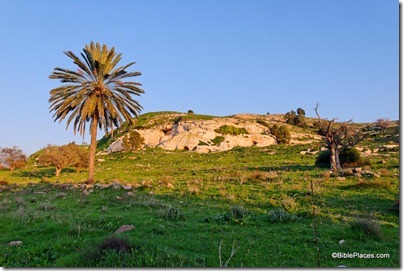Excavations of the Philistine city of Gath (Tell es-Safi) began this week, and Associated Press writer Matti Friedman visited the site with photographer Ariel Schalit. Their profile of the site’s importance and its connection to the Philistines in history is well-written. From the article’s conclusion:
One intriguing find at Gath is the remains of a large structure, possibly a temple, with two pillars. Maeir has suggested that this might have been a known design element in Philistine temple architecture when it was written into the Samson story.
Diggers at Gath have also found shards preserving names similar to Goliath — an Indo-European name, not a Semitic one of the kind that would have been used by the local Canaanites or Israelites. These finds show the Philistines indeed used such names and suggest that this detail, too, might be drawn from an accurate picture of their society.
The findings at the site support the idea that the Goliath story faithfully reflects something of the geopolitical reality of the period, Maeir said — the often violent interaction of the powerful Philistines of Gath with the kings of Jerusalem in the frontier zone between them.
“It doesn’t mean that we’re one day going to find a skull with a hole in its head from the stone that David slung at him, but it nevertheless tells that this reflects a cultural milieu that was actually there at the time,” Maeir said.
The full story is here. Larger versions of the seven photographs may be found here.
HT: Joseph Lauer
